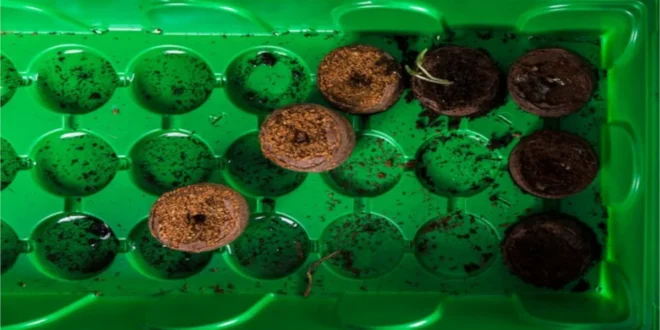Table of Contents
ToggleUnlocking Soil Health: The Essential Guide to Soil Analysis Test Kits
Soil is the foundation of our agricultural systems, impacting everything from crop yield to environmental health. To understand and improve soil quality, farmers, gardeners, and environmental scientists rely on soil analysis test kits. This article will explore the significance of soil testing, the components of a soil analysis test kit, the types of tests available, and how to use these kits effectively. By the end, you’ll have a thorough understanding of how soil analysis test kits can help you optimize soil health and productivity.
1. Understanding Soil Health
Soil health refers to the condition of soil in terms of its ability to sustain agricultural plant and animal production, maintain or improve water and air quality, and support human health. Healthy soil is characterized by a balanced composition of minerals, organic matter, water, and living organisms. However, soil can degrade due to various factors, including overuse of chemicals, poor farming practices, and environmental changes.
Importance of Soil Health
Healthy soil contributes to:
- Crop Production: Nutrient-rich soil supports robust plant growth, leading to higher yields.
- Water Quality: Soil filters water, preventing contaminants from reaching groundwater and surface water bodies.
- Biodiversity: Healthy soils support diverse ecosystems, which in turn enhance agricultural resilience.
- Carbon Sequestration: Well-maintained soils can capture carbon dioxide, helping mitigate climate change.
2. The Role of Soil Testing
Soil testing plays a vital role in assessing the health and quality of soil, serving as a foundation for informed agricultural practices and environmental stewardship. By conducting thorough analyses, farmers, gardeners, and land managers can gather critical data about soil composition, nutrient levels, pH balance, and potential contaminants. This information not only enhances understanding of current soil conditions but also empowers users to implement targeted strategies that promote soil health and productivity.
Importance of Soil Testing
Soil testing is essential for several reasons:
- Informed Decision-Making: Understanding soil characteristics allows users to make data-driven decisions regarding amendments and management practices. This reduces the guesswork often associated with soil management, leading to more effective strategies that enhance soil health and crop performance.
- Resource Efficiency: By pinpointing specific nutrient deficiencies, soil testing helps users avoid over-fertilization, which can lead to waste of resources and potential environmental harm. Efficient resource use is not only cost-effective but also contributes to sustainable agricultural practices.
- Environmental Protection: Regular soil testing aids in identifying contaminants, such as heavy metals or pesticides, that can negatively impact both soil and human health. Early detection of these harmful substances allows for prompt remediation and minimizes the risk of pollution.
Benefits of Soil Testing
Soil testing offers numerous benefits that can significantly impact agricultural outcomes and soil sustainability:
Nutrient Management
One of the primary advantages of soil testing is its ability to identify nutrient deficiencies. By understanding the specific nutrient profile of the soil, users can create a targeted fertilization plan that addresses the unique needs of their crops. This ensures that plants receive the essential macronutrients (nitrogen, phosphorus, potassium) and micronutrients (iron, manganese, zinc) in the right proportions, ultimately leading to healthier plants and increased yields. Moreover, proper nutrient management minimizes the risk of nutrient runoff into water bodies, promoting environmental sustainability.
pH Balance
Soil pH is a critical factor influencing nutrient availability and microbial activity in the soil. Testing for pH helps determine whether the soil is acidic, neutral, or alkaline. Most crops thrive in a pH range of 6.0 to 7.5, where nutrients are optimally available. If the pH falls outside this range, it can lead to nutrient lockout, where essential nutrients become unavailable to plants. By identifying pH imbalances, users can make informed decisions about lime or sulfur applications to correct acidity or alkalinity, thereby enhancing nutrient uptake and overall soil health.
Contamination Detection
Soil testing also plays a crucial role in identifying harmful contaminants that can compromise crop health and safety. Through routine analysis, users can detect the presence of heavy metals (such as lead, cadmium, or arsenic), residual pesticides, or other pollutants. Early detection is vital for mitigating risks to human health and the environment. For instance, if elevated levels of contaminants are found, users can take corrective actions, such as removing contaminated soil or employing phytoremediation strategies, to restore soil health and safety.
Improved Yields
Ultimately, the insights gained from soil testing lead to improved crop yields. By optimizing soil conditions through targeted amendments and management practices, users can create a more conducive environment for plant growth. Healthy soil supports robust root systems, improves water retention, and fosters beneficial microbial activity, all of which contribute to enhanced plant vitality. As a result, farmers and gardeners can experience higher yields and better-quality produce, contributing to economic stability and food security.
3. Components of a Soil Analysis Test Kit
A soil analysis test kit typically includes various tools and materials designed to facilitate accurate testing. The specific contents may vary depending on the kit, but common components include:
3.1. Sample Collection Tools
- Soil Probe: A tool used to extract soil samples from various depths and locations in the field.
- Trowel or Scoop: Handy for collecting soil from surface layers or mixing samples.
- Plastic Bags or Containers: Used to store and transport soil samples without contamination.
3.2. Testing Equipment
- pH Meter or Test Strips: Measures soil pH, indicating acidity or alkalinity.
- Nutrient Test Kits: Often include reagents to test for essential nutrients like nitrogen (N), phosphorus (P), and potassium (K).
- Moisture Meter: Measures soil moisture content, important for understanding irrigation needs.
3.3. Instruction Manual
A comprehensive guide that explains how to collect samples, perform tests, and interpret results is vital for effective soil testing.
4. Types of Soil Tests
Soil analysis test kits can perform various tests, each targeting specific soil characteristics. Here are some of the most common types of soil tests:
4.1. pH Testing
Soil pH is a critical factor affecting nutrient availability. Most crops thrive in a pH range of 6.0 to 7.5. Testing for pH allows users to make necessary amendments, such as adding lime to raise pH or sulfur to lower it.
4.2. Nutrient Analysis
- Macronutrients: Tests for nitrogen, phosphorus, and potassium (N-P-K) levels, which are essential for plant growth.
- Micronutrients: Measures trace elements like iron, manganese, zinc, and copper, which are crucial in smaller quantities.
4.3. Organic Matter Content
Organic matter enriches soil health by improving its structure, water retention, and nutrient-holding capacity. Testing organic matter levels helps in understanding soil fertility.
4.4. Electrical Conductivity (EC)
EC testing measures soil salinity. High salinity can hinder plant growth, so this test is vital for areas with irrigation or excessive fertilizer use.
4.5. Contaminant Testing
Advanced soil analysis kits may include tests for contaminants such as heavy metals, pesticides, or other harmful substances that could affect plant and human health.
5. How to Use a Soil Analysis Test Kit
Using a soil analysis test kit is a straightforward process, but it requires careful attention to detail to ensure accurate results. Follow these steps:
5.1. Collecting Soil Samples
- Choose Sampling Locations: Select various spots in your field or garden, avoiding areas that may not soil analysis test kit represent the whole (e.g., near plants or debris).
- Remove Surface Material: Clear away any plant litter, debris, or grass before sampling.
- Use the Soil Probe: Insert the soil probe to the recommended depth (usually 6-12 inches for most crops) and collect soil samples.
- Combine Samples: Mix samples from different locations in a clean container to create a composite sample.
5.2. Performing the Tests
- Follow the Instructions: Use the provided manual to guide you through the testing process for each soil analysis test kit parameter.
- Measure pH: If using a pH meter, calibrate it first, then measure the pH of your soil sample according to the kit’s instructions.
- Conduct Nutrient Tests: Add the soil sample to the provided reagents as instructed and wait for the indicated reaction time.
- Record Results: Keep a detailed record of your findings for future reference.
5.3. Interpreting Results
- Compare to Standards: Use the kit’s chart or guidelines to interpret your results and determine whether any soil analysis test kit amendments are needed.
- Consult Experts: If unsure about your findings, consider reaching out to a local agricultural extension office or soil specialist for guidance.
6. Best Practices for Soil Testing
To maximize the benefits of soil analysis, follow these best practices:
6.1. Test Regularly
Soil composition can change over time due to farming practices, weather, and other factors. Regular testing soil analysis test kit (every 1-3 years) helps monitor changes and adjust management practices accordingly.
6.2. Sample at the Right Time
The best time for soil testing is during the fall or early spring, before planting, as this allows for timely amendments.
6.3. Clean Equipment
Ensure all sampling tools and containers are clean to prevent contamination and ensure accurate results.
6.4. Understand Local Conditions
Familiarize yourself with local soil conditions, climate, and crop requirements to make informed decisions based soil analysis test kit on your test results.
7. Selecting the Right Soil Analysis Test Kit
With various soil analysis test kits available, selecting the right one for your needs is crucial. Consider the following factors:
7.1. Testing Requirements
Determine which soil characteristics you need to test (pH, nutrients, contaminants) and select a kit that covers soil analysis test kit those tests.
7.2. User-Friendliness
Choose a kit with clear instructions and easy-to-use equipment, especially if you’re a beginner.
7.3. Accuracy and Reliability
Research and read reviews to find kits known for accurate and reliable results.
7.4. Budget
Soil analysis test kits vary in price. Balance your budget with the features and tests offered in each kit.
8. The Future of Soil Analysis
As agricultural practices evolve, so do soil analysis techniques. Emerging technologies such as:
8.1. Digital Soil Testing
Using sensors and remote sensing technology, digital soil testing can provide real-time data on soil health, moisture levels, and nutrient content.
8.2. Soil Health Apps
Mobile applications are becoming more prevalent, allowing users to input soil data and receive instant analysis and recommendations.
8.3. Integrated Farming Systems
As part of a broader trend toward sustainable agriculture, integrating soil analysis with other farming practices can enhance crop productivity while minimizing environmental impact.
Conclusion
A soil analysis test kit is an indispensable tool for anyone involved in agriculture or gardening. By understanding soil health and utilizing soil testing, you can enhance crop yields, promote environmental sustainability, and contribute to healthier ecosystems. Regular soil testing and informed decision-making based on test results will help you maximize the potential of your land while preserving it for future generations. Embrace the power of soil analysis, and you’ll reap the rewards of healthier plants and a thriving environment.
Frequently Asked Questions (FAQs)
What is a soil analysis test kit used for?
A soil analysis test kit is designed to assess the quality and health of soil. It provides valuable insights into soil composition, including nutrient levels, pH balance, and organic matter content. By using these kits, gardeners and farmers can determine the necessary amendments and practices needed to optimize soil conditions for better crop growth and environmental sustainability.
How often should I test my soil?
It is recommended to test your soil every 1 to 3 years, depending on your agricultural practices and local conditions. Regular testing helps monitor changes in soil composition due to factors like weather, crop rotation, and fertilization. Testing at the right time, such as before planting in spring or fall, ensures you can make timely amendments for optimal soil health.
What are the main components of a soil analysis test kit?
Typically, a soil analysis test kit includes tools for sample collection, such as soil probes and trowels, testing equipment like pH meters and nutrient test reagents, and an instruction manual. These components work together to facilitate accurate testing and help users interpret the results effectively.
Can I perform soil testing on my own, or do I need professional help?
You can perform soil testing on your own using a DIY analysis kit, which is user-friendly and comes with clear instructions. However, if you require more advanced analysis or have specific concerns about contaminants, consulting a professional soil laboratory may be beneficial for comprehensive testing and detailed recommendations.
What factors can affect soil health that I should be aware of?
Soil health can be influenced by various factors, including soil texture, organic matter content, moisture levels, and pH balance. Additionally, practices such as over-fertilization, excessive irrigation, and the use of chemicals can degrade soil quality. Understanding these factors is essential for maintaining healthy soil and enhancing agricultural productivity.
How do I interpret the results from my soil analysis test kit?
Interpreting soil test results involves comparing your findings against established standards for optimal soil health. Most test kits provide a guide or chart to help you understand your results, including nutrient levels and pH balance. If you are uncertain about the implications of your findings, consider consulting with an agricultural extension office or soil specialist for personalized advice on amendments and management practices.
READ ALSO: FPV Drones: A Comprehensive Guide to First-Person View Technology
 Touch Blog
Touch Blog



